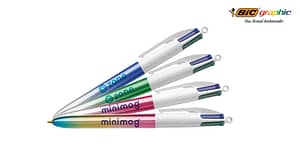For those starting an online store, understanding digital marketing is vital, as it helps you reach your target customers and drive traffic to your website. Fortunately, there are many easy and affordable strategies available. In this article, we will share ten important tips for using digital marketing to promote your new online store.
Challenges of starting a new online store
Launching a new retailer website comes with its own set of difficulties. First, it is tough to make people notice your brand among so many others. With lots of competition out there, new stores struggle to stand out and capture the attention of the right customers.
Another significant challenge is getting people to visit your new website, especially if you don’t already have lots of customers or a big online presence. New stores often find it hard to rank well on search engines to attract visitors. Digital ads can help, but they can be expensive, especially for new stores with small budgets. Plus, it is not always easy to figure out the best ways to reach your target audience and create content they will like.
Turning website visitors into paying customers is yet another hurdle. It takes building trust and showing that your store is credible and reliable.
But the good news is you can overcome these challenges by picking the right digital marketing strategies.
How digital marketing helps
Digital marketing levels the playing field for businesses of all sizes. Even small stores can reach their target audience online.
Using digital marketing is often simple, even if you are not a tech expert. There are plenty of online tutorials and guides to help you learn. And you don’t need to spend a lot of money – there are many free or low-cost tools and platforms available.
Digital marketing allows you to select the most effective ways to promote your store, as not all strategies are suitable for every business, especially considering budget constraints. Furthermore, you can track the performance of your campaigns using digital marketing analytics and tracking tools. Monitoring key metrics such as website traffic, conversion rates, and return on investment (ROI) helps you make better decisions and improve your performance over time.
Impact of compelling product descriptions
The initial step is to craft engaging and customer-centric product descriptions. By offering concise yet insightful details about features and benefits, and addressing potential concerns, these descriptions instill confidence in potential customers and guide them towards informed purchasing decisions. Utilising descriptive language, storytelling techniques, and sensory details can captivate your audience and create a lasting impression. To ensure accuracy and relevance, it is essential to regularly update product descriptions. As your inventory changes or product features evolve, make sure your descriptions reflect the latest information.
SEO essentials
While prioritising appeal to human readers, it is essential to ensure that your store is discoverable on platforms like Google. Search engine optimisation (SEO) increases the likelihood of your product pages appearing on the first page of search results. It involves various practices, but here are some foundational on-page techniques to consider, especially if you are just starting out.
Firstly, focus on on-page content, which includes product titles, descriptions, images, blogs, and other relevant information. This content should naturally incorporate language commonly used by your customers during product searches and address their queries. Conducting keyword research is the initial step to identify terms and phrases relevant to your offerings. Thoughtfully integrating these keywords into your product pages improves your chances of ranking higher on search engine results pages (SERPs). Tools like Google Analytics and Google Search Console can assist in monitoring this process.
Another important aspect is meta tags – title tags and meta descriptions. They serve as signals to search engines about the content of each page. Title tags act as headlines for search engines, while meta descriptions provide concise page summaries. Therefore, every webpage should have a unique title tag and meta description to avoid duplication issues. Similarly, avoid duplicating text in subheadings across different pages, as this can confuse search engines and diminish content relevance.
Email marketing tactics
Email remains a powerful tool because it delivers personalised messages tailored to customer preferences, behaviours, and purchase history. Leveraging this tool in your marketing arsenal upon launching a new retail website can effectively drive traffic and generate interest, particularly when combined with enticing promotions or referral discounts. This strategy also enhances ROI.
To cultivate an email list, you need to gather addresses from various touchpoints such as website sign-ups, purchases, and promotional events. Once collected, you can leverage the comprehensive features provided by email marketing platforms for list management, campaign creation, and performance tracking. This enables you to concentrate on crafting compelling content.
Compelling emails, whether they announce the latest product or share behind-the-scenes stories, keep customers informed and engaged. Promotional emails provide retailers with a direct channel to communicate special offers, discounts, and sales promotions, and research indicates that consumers welcome these emails from brands they engage with. To nurture relationships and encourage repeat visits to your online store, it is essential to consistently share diverse content including product launches, company updates, and exclusive offers.
Power of social media marketing
Social media offers extensive reach and a diverse user base, making it an effective platform for connecting with customers and promoting new retail websites at minimal costs. Its interactive nature enables personalised engagement, facilitating prompt responses to customer needs.
To utilise social media effectively and efficiently, it is crucial to strategically select relevant channels aligned with your target audience and maintain consistency in posting frequency and tone for a cohesive brand presence. Hashtags can amplify content reach, while various formats such as images, videos, infographics, and blog posts help maintain follower interest. Encouraging sharing and incorporating user-generated content further enhances engagement and expands brand reach.
Social media advertising allows you to showcase compelling visual content. Starting with simple, engaging imagery and adjusting tactics based on performance ensures targeted and cost-effective promotion. Additionally, there are features that facilitate real-time interactions and community building: stories enable dynamic content sharing, groups foster personalised interactions and engagement, while direct messaging allows communication with customers on a personal level, providing tailored assistance. Features like surveys, polls, quizzes, and open-ended questions in social media stories enable gathering real-time insights from the audience.
Benefits of Google Business Profile
A well-optimised Google Business Profile (GBP) can significantly enhance a business’s visibility in local search results and on Google Maps. This ensures that the business listing stands out prominently when users search for retail stores or products in the area.
To leverage GBP effectively, it is vital to include important details in the listing, such as the business name, address, phone number, website URL, and operating hours. Keeping this information up to date ensures that customers have accurate and current information about the business. Additionally enriching the listing with engaging content such as high-quality photos, videos, and positive reviews helps to build trust and credibility with potential customers.
Positive reviews not only influence purchasing decisions but also demonstrate the commitment to providing excellent service. Therefore, encouraging satisfied customers to leave positive reviews on your GBP or your website can further enhance your business’s reputation and ranking in search results.
Influence of customer reviews
As they offer valuable insights for any retailer seeking improvement, regularly monitoring reviews across platforms is essential for staying updated on customer sentiments. Employing various strategies to gather feedback post-purchase, such as offering incentives or discounts, or using email marketing or follow-up surveys, can effectively solicit reviews. It is crucial to express gratitude for feedback received.
Once the review is obtained, responding promptly to both positive and negative feedback, and addressing any concerns raised becomes vital. Positive reviews can be showcased on the website and social media channels, or in a dedicated section for testimonials.
In the case of negative reviews, offering solutions or compensation when necessary demonstrates a commitment to customer satisfaction, which can turn negative experiences into positive outcomes. Additionally, monitoring competitor reviews can provide insights into their strengths and weaknesses, helping to identify areas where your business can differentiate itself and capitalise on opportunities to attract dissatisfied customers from competitors.
Potential of strategic partnerships
Collaborating with other businesses and brands can be a powerful tactic for retailers. Effective strategic partnerships are formed by prioritising brands that share a similar target audience while offering complementary products or services. This ensures reaching a new yet relevant audience and creates synergy in collaborative marketing efforts.
These partnerships offer various cross-promotion strategies. At the top-of-the-funnel stage, co-sponsoring podcasts, blogs, or social media campaigns focused on shared interests helps reach potential customers during their discovery phase. Seasonal initiatives like co-branded gift guides or themed promotions leverage consumer trends. Down-funnel promotions in collaboration with partner brands, offering bundled discounts or exclusive deals, encourage exploration of both brands’ offerings.
Value of PPC advertising
A faster, albeit more costly, way to reach customers compared to organic methods is through pay-per-click (PPC) advertising. Unlike traditional advertising models where payment is based on impressions, PPC ensures that retailers only pay when users click on their ads, maximising the effectiveness of their advertising budget.
Platforms like Google Ads and social media advertising channels empower retailers to create targeted campaigns, showcasing their products or services to potential customers. These campaigns can be adjusted to accommodate seasonal fluctuations, promotional events, or shifts in market demand.
There are various PPC advertising platforms to choose from. Google Ads allows retailers to display ads prominently on SERPs for specific keywords, ensuring visibility to users actively seeking related products or services. Social media PPC advertising on platforms like Facebook and Instagram enables showcasing ads directly within users’ feeds, utilising demographic and interest-based targeting for increased engagement.
PPC advertising offers robust tracking and analytics capabilities. Retailers can assess the effectiveness of their PPC campaigns to identify areas for improvement through metrics such as click-through rates (CTR), conversion rates, and return on ad spend (ROAS), then adjust spending levels based on campaign performance and business objectives.
Influencer marketing strategies
Apart from forming brand partnerships, another effective strategy for retailers to broaden brand reach and visibility is through influencer marketing. This involves collaborating with niche bloggers who possess significant online influence and credibility within their respective industries. These influencers, often regarded as thought leaders and trendsetters, hold sway on platforms like Instagram, YouTube, and TikTok, boasting dedicated followings that rely on their recommendations and advice for purchasing decisions.
By partnering with influencers, you can tap into new audience segments and drive organic traffic to your retail website, thereby diversifying your promotional efforts across various channels. Common influencer marketing tactics include influencer-written blog posts, social media content reviewing or demonstrating products, or product mentions at events. Providing influencers with clear guidelines and messaging frameworks ensures the genuine communication of the brand story and values.
As consumers prioritise authenticity and transparency, partnering with influencers allows retailers to enhance brand credibility and establish connections with potential customers. However, it is important to carefully vet influencers to ensure alignment with brand values and target demographics.
Role of networking
Opportunities for expanding a brand’s reach and gaining publicity can be also found through networking – the process of forging connections with industry professionals. Unlike paid advertising, networking doesn’t necessarily require a financial investment; rather, it relies on the investment of your time and effort to cultivate meaningful partnerships.
One effective networking strategy involves collaborating with PR professionals to establish connections with journalists and media outlets, enabling you to share news about your products or company updates. Similarly, reaching out to industry bloggers can lead to valuable partnerships, such as sponsored content or product reviews.
Another strategy is participating in online events and discussions, such as virtual conferences and webinars, to showcase expertise and engage with potential customers. This allows you to establish yourself as a thought leader and attract attention to your retail business.
Staying informed about current events, political movements, and community happenings can also bolster networking efforts. Taking a stand on social issues or aligning your brand with specific causes can resonate with your target audience, fostering connections with like-minded individuals and strengthening your brand’s reputation.
Finding the right marketing mix for your online store
Choosing the most effective marketing strategies for your online store involves aligning your approach with your business goals and target audience. Here are key steps to guide your decision-making process.
Define your objectives. Start by clarifying your primary marketing goals. Are you focused on enhancing brand awareness, increasing website traffic, or driving sales? Tailor your strategies accordingly, considering options such as SEO and content marketing.
Assess available resources. Evaluate the resources and assets you have at your disposal. Do you have a strong email list? If so, email marketing can be an effective starting point to reach your audience.
Understand your audience. Analyse the demographics and preferences of your target audience. Determine which social media platforms they use most and where they are most responsive to marketing messages. This insight will help you focus your efforts on channels with the highest engagement potential.
Prioritise high-ROI channels. Identify marketing channels with the potential for the highest return on investment based on your objectives and budget. Focus on channels that have proven effectiveness in reaching your target audience.
Study competitor strategies. Research competitors in your industry to gain insights into their marketing tactics. While maintaining your brand’s uniqueness is important, analysing competitor approaches can provide valuable inspiration and reveal potential market opportunities to capitalise on.
By following these steps and customising your approach based on your business needs, you can develop a tailored marketing mix that effectively promotes your online store and drives business growth.
Bottom line
This article has covered various aspects of digital marketing for retail, including email marketing, social media advertising, influencer partnerships, and other tactics. However, it is essential to recognise that not every strategy may suit your specific business needs. Therefore, it is important to assess where you can derive the most value and prioritise those avenues accordingly.
Tailored strategies, adapted to your business goals and target audience, can significantly enhance brand visibility and customer engagement. The key lies in finding the right mix that aligns with your objectives and resources. Consider exploring ecommerce solutions like those offered by Fourmeta UK in London to streamline operations and maximise your online store’s potential. With the right tools and strategies, you can set your retail business on a path to success.






Leave a Comment